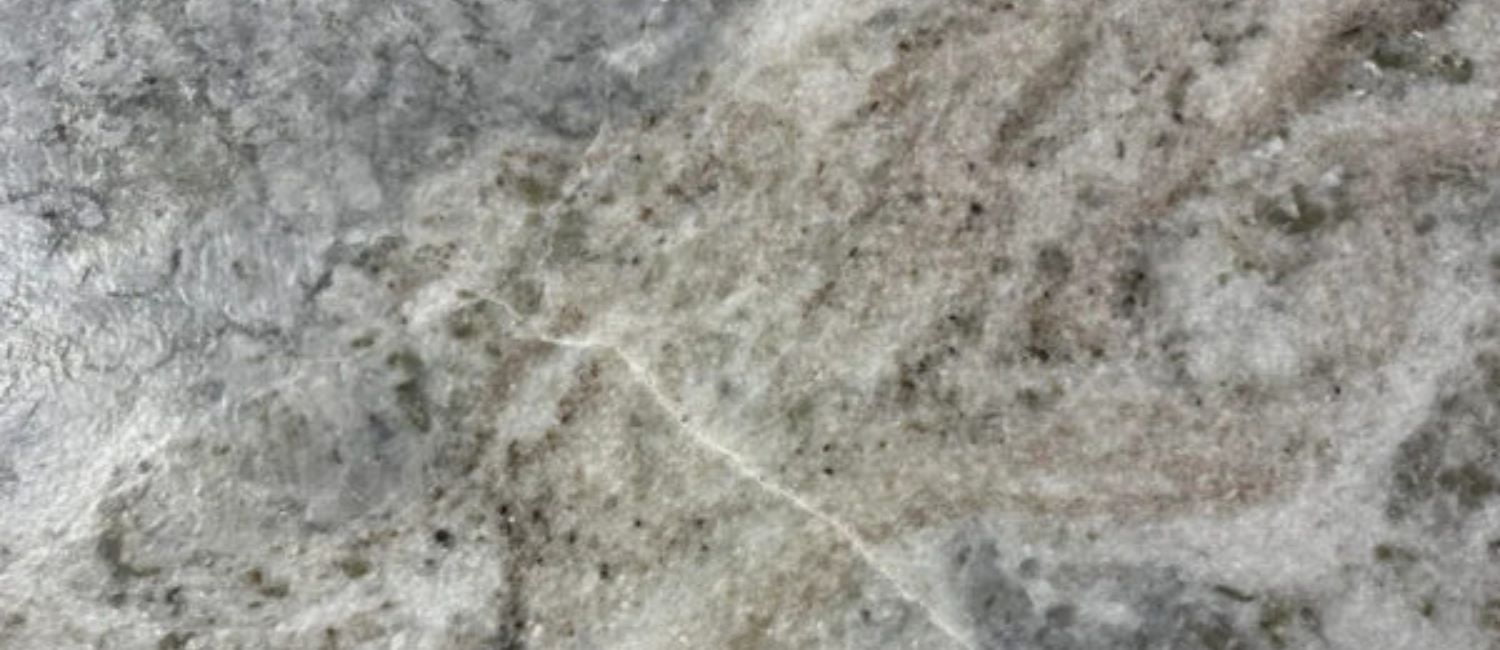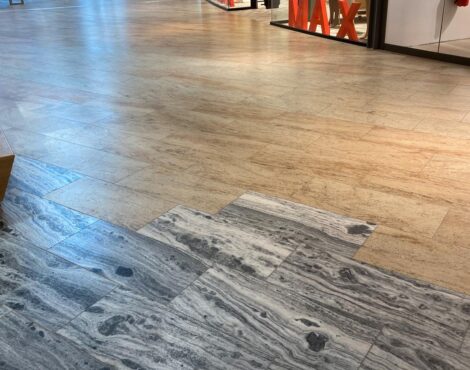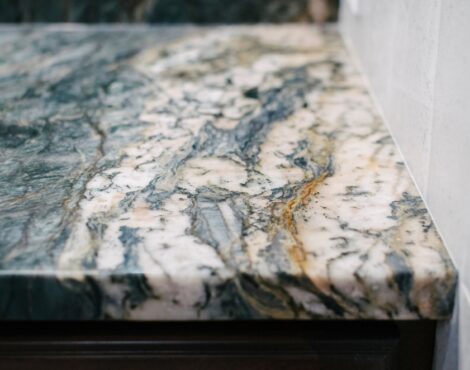At Stone Galleria, we explore natural stone to understand why pits, cracks, and fissures occur. Natural stone often has interesting features that tell stories about how it formed and was made. Our guide will help you understand the meaning and importance of these formations, so you can make informed decisions for your projects.
What are Pits or Holes in Granite or Natural Stone?
When we talk about pits in granite or natural stone, we’re referring to small holes or dimples you might see on the surface of the stone. Think of them as tiny pockets or gaps. Now, these pits are completely natural and happen during the rock’s creation process.
Imagine rocks forming deep in the Earth. As they cool down and solidify, tiny bits like gases and other natural elements get trapped, creating these small holes. The size of these pits can vary a lot, from really, really small specks to somewhat bigger holes.
How noticeable these pits are depends on how the stone is finished. If it’s polished super smooth, you might not even notice them. But if the surface has a more textured finish, the pits might stand out a bit more.
Here’s the important part: even though these pits are there, they don’t usually make the stone weaker or less durable. They’re just part of what makes each piece of stone unique. Some people even like the look because it adds character.
In some cases, especially for aesthetic reasons, pits can be filled or sealed during the fabrication process. This is done using epoxy resin or other stone fillers to create a smoother surface.
Understanding Fissures in Granite
In the realm of natural stone, particularly granite, the term “fissures” denotes natural cracks or fractures inherent in the material. Unlike accidental damage, these are geological features formed during the rock’s creation process.
Fissures emerge as the result of natural forces resulting from immense heat and pressure during formation. These cracks can exhibit a range of sizes, from subtle hairline fractures to more pronounced lines.
It’s essential to recognize that, contrary to initial concerns, fissures typically do not compromise the structural integrity or durability of granite. In fact, they contribute to the stone’s distinctive character, showcasing its geological history.
The perception of fissures can be influenced by the stone’s finish. Polished surfaces may render them less conspicuous, while textured finishes could accentuate their presence. While some may view fissures as a natural and appealing aspect of granite, others might prefer a smoother surface.
In instances where a flawless appearance is desired, fabrication processes may involve filling these fissures using specialized materials. This is done not to address structural concerns but rather to achieve a more uniform aesthetic.
Distinguishing Fissures from Cracks in Granite
It’s crucial to draw a clear distinction between fissures and cracks when examining granite. Fissures manifest as natural features, visible on the polished surface of a slab. Unlike cracks, which denote a physical separation within the stone, fissures are geological formations integral to the rock’s composition.
Cracks represent a tangible break or separation in a slab. These can occur at various stages, from the quarrying process to handling, fabrication, transportation, and even due to structural stress post-installation.
-
How to Deal with Cracks and Fractures
Cracks and fissures are common in stones due to the natural stress they experience over time. They are visible separations and hairline fractures. It’s important to know about the different kinds of cracks and fissures in order to figure out if a stone is structurally strong.
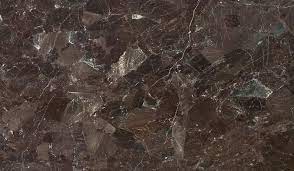
Importance and Things to Think About
When stones have pits, cracks, and fissures, it can add to their natural beauty. However, it’s important to know what these features mean before using them in your projects.
-
A Story of Authenticity
Pits, cracks, and fissures show that the stone is real and has an interesting history. They demonstrate how natural forces have been sculpting the Earth’s crust for a very long time.
-
Aesthetic Impact
Adding these features to your design can make it look unique and attractive. Pits can make the stone feel rough, and fissures can make it look old and rustic.
-
Structural Implications
It’s important to know about cracks and fissures to understand if a stone is strong or not. Small imperfections are usually not a problem, but larger cracks can make the stone less durable.
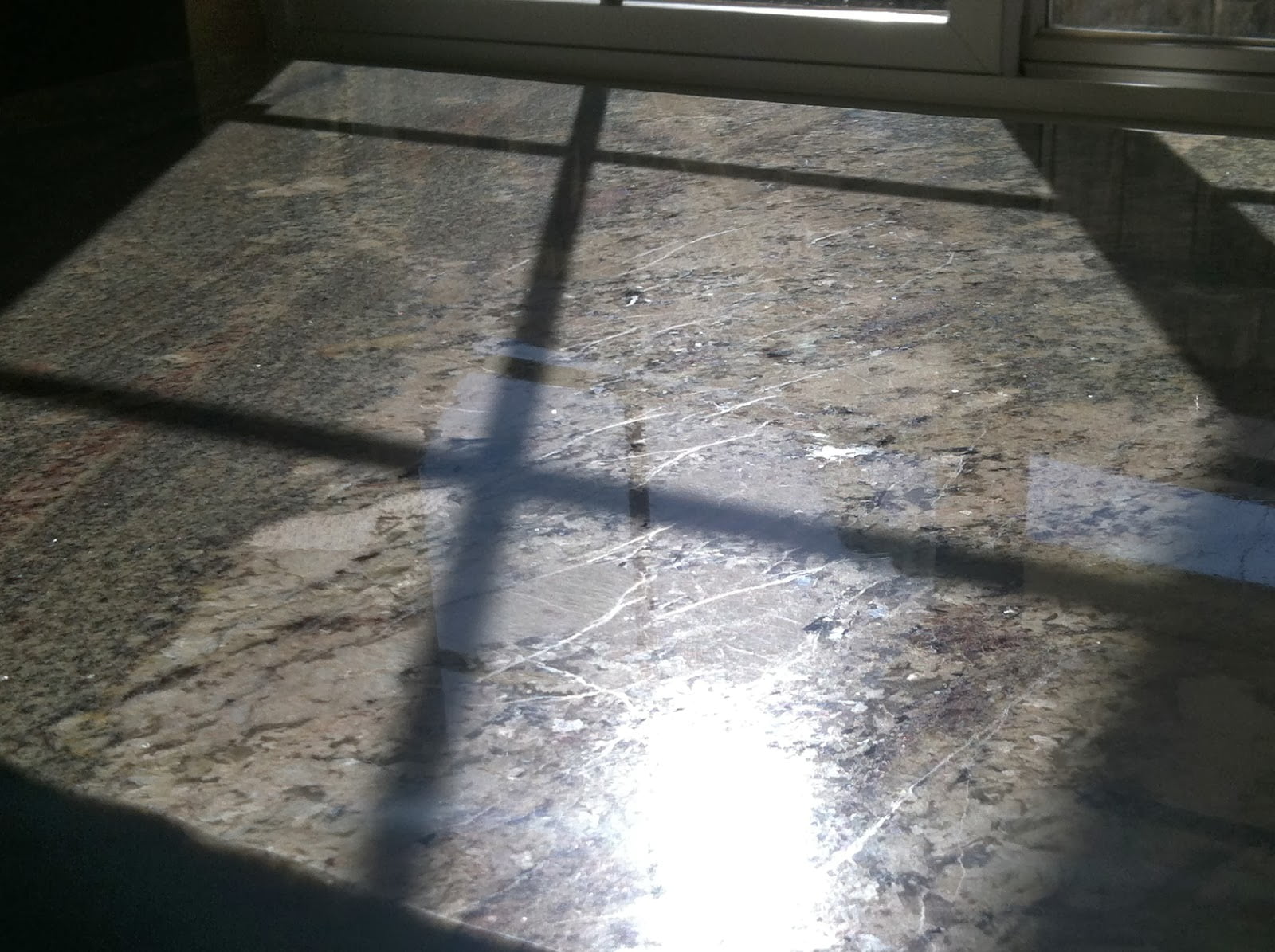
Understanding How to Choose
When you pick natural granite stone for your project, it’s important to consider if there are any holes, breaks, or cracks.
-
Suitability for Purpose
Think about how you want to use the stone. For example, a countertop might need to be stronger than a decorative accent.
-
Expert Evaluation
It’s a good idea to hire a stone expert. They can check the stone’s condition and tell you if any pits, cracks, or fissures are suitable for your project.
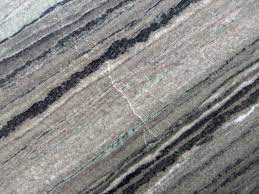
Conclusion
Pits, cracks, and fissures are not just flaws; they are the signs of a stone’s passage over time. At Stone Galleria, we want to give you the information you need to understand these features and make smart decisions. When you know more about how stone naturally looks, you can appreciate and enjoy its unique beauty that comes from nature.
Stone Galleria
We offer more than just materials – we provide a partnership founded on reliability and responsiveness. Stone Galleria recognizes the distinctive requirements of commercial enterprises and is committed to delivering dependable and cost-effective supply chain management.
As a leading manufacturer, supplier, and exporter of Granite, Sandstone, and Quartzite, we tailor our products to your specifications, including dimensions, thickness, and various finishes.
Embark on the journey to enhance your operations by requesting a free quote today. Complete our inquiry form, and we will promptly respond to your needs.
Knowledgeable – Reliable – Responsive

